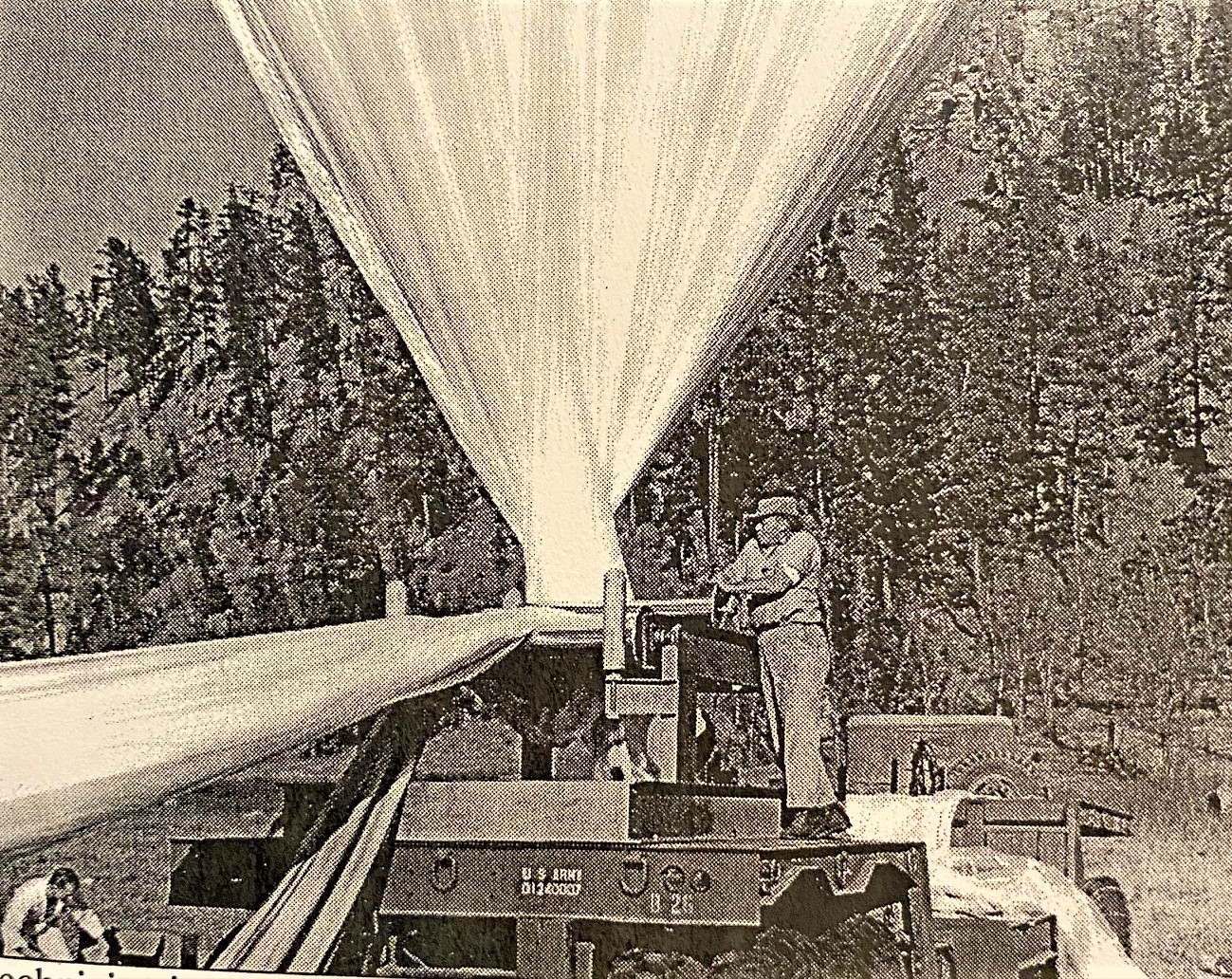
Image Courtesy of Jim Winker
"Once again, in 1956 and 1957, the Stratobowl of South Dakota, would be used to launch two balloons in order to penetrate the skies in search of new scientific discoveries. The Stratobowl of South Dakota was a popular launch site because its topographical and natural features provided the protection and cover required for successful inflations and launching of two earlier flights, Explorer I and Explorer II. Whereas in 1935, Explorer II, marked the last high altitude flight and the subsequent completion of the first step of human stratospheric ballooning, it was Stratolab I that ushered in the beginning of the second step of high altitude ballooning and the developing space age, twenty-one years later."
Balloons Aloft: Flying South Dakota Skies
On November 8, 1956, the Stratolab I's gondola lifted off the ground. The Lieutenant Commanders were Malcolm Ross and M.L. Lewis. Stratolab I set a new world record at 76,000 feet above sea level. It surpassed Explorer II's previous record by 3,000 feet. Stratolab I's gondola was made with aluminum and its balloon was made with a relatively light, inexpensive polyethylene plastic that was proven in the Skyhook flights. The rubberized cotton envelope of Explorer II weighed 5,916 pounds when fully expanded, including its various accessories. Stratolab I weighed 595 pounds including valves. The two aeronauts remained at their peak altitude for only a few minutes before starting an unexpected descent due to a malfunctioning helium valve. Once at a safe level, they started jettisoning equipment out of the porthole to slow their rate of descent. They finally made a safe landing on level, sandy soil near a ranch in Brownlee, Nebraska. Despite the defective valve, the flight was successful in providing scientific and technical information.

Image Courtesy of Jim Winker

Image Courtesy of Rapidcityjournal.com

Image Courtesy of Rapidcityjournal.com
The purpose of this flight was to provide and utilize a high altitude laboratory, test the physical response of humans within a high altitude environment, and to conduct specific scientific experiments. These studies included aero medicine, meteorology, atmospheric physics, and astronomy. The research provided significant information and broke additional barriers.

Image Courtesy of Rapidcityjournal.com
Three years later Stratolab IV launched from the Stratobowl. "Malcolm Ross, the physicist and veteran pilot of Stratolab I, realized that ballooning was the logical step toward space astronomy. On that afternoon of November 28, 1959, when Stratolab IV leaped upward from the now famous Stratobowl... Malcolm Ross had selected as his co-pilot, Dr. Charlie Moore of General Mills in Minneapolis, Minnesota. The balloon reached a new record altitude of 81,000 feet. Ross and Moore spent the evening with a 16 inch telescope and spectrograph observing the water vapor in the atmosphere of the planet Venus."
Balloons Aloft: Flying South Dakota Skies
Video Courtesy of Captain-Crystal Stout